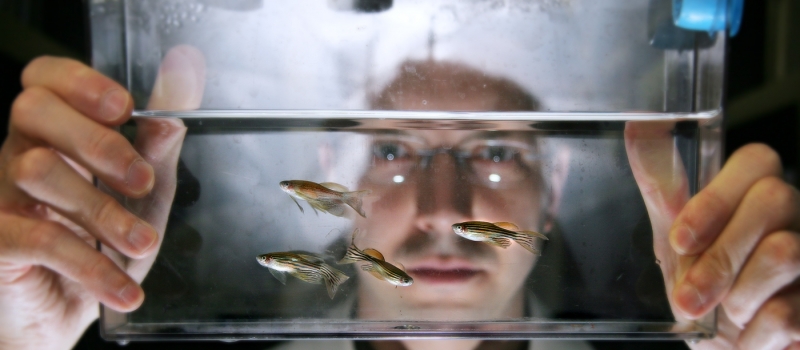
In the Shavit laboratory we perform “clinically directed basic research” in the field of hemostatic and thrombotic disorders.
Patients with deficiencies of particular blood coagulation factors are often labeled with bleeding or clotting disorders, yet often have no phenotype. On the other hand there are patients with phenotypes out of proportion to their laboratory clotting factor profile. Thus we are often unable to predict an individual patient’s risk with any useful degree of accuracy. Our goal is the identification of genes that modify blood clotting factors and their phenotypic expression. Knowledge of such modifier genes will improve diagnosis and classification of blood coagulation disorders, identify potential targets for therapy, and further our understanding of the underlying biology of hemostasis and thrombosis. In order to achieve these goals, we are developing zebrafish models of human blood clotting disorders. To date there has been relatively little characterization of the blood coagulation system in zebrafish. We have developed numerous models of coagulation disorders through genome editing with TALENs and CRISPR. Sensitized ethylnitrosourea (ENU) mutagenesis and high throughput chemical suppressor screens are being performed on mutants with bleeding and thrombotic phenotypes. This strategy will identify genetic and chemical modifiers of clotting phenotypes, and once characterized they will be examined in murine models and patient populations.
We are also enhancing our previous work mapping quantitative trait loci (QTL) for blood clotting factors in the mouse by performing similar studies in zebrafish. Mouse QTL mapping involves generating pedigrees of hundreds of mice at great expense. Since zebrafish pairs can produce hundreds of embryos with each mating, this work becomes more rapid and significantly less expensive. We are developing techniques to measure blood clotting factors in zebrafish which will be followed by mapping of QTLs. After positional cloning and characterization of the underlying genes, we will analyze these in murine models and patient populations.
